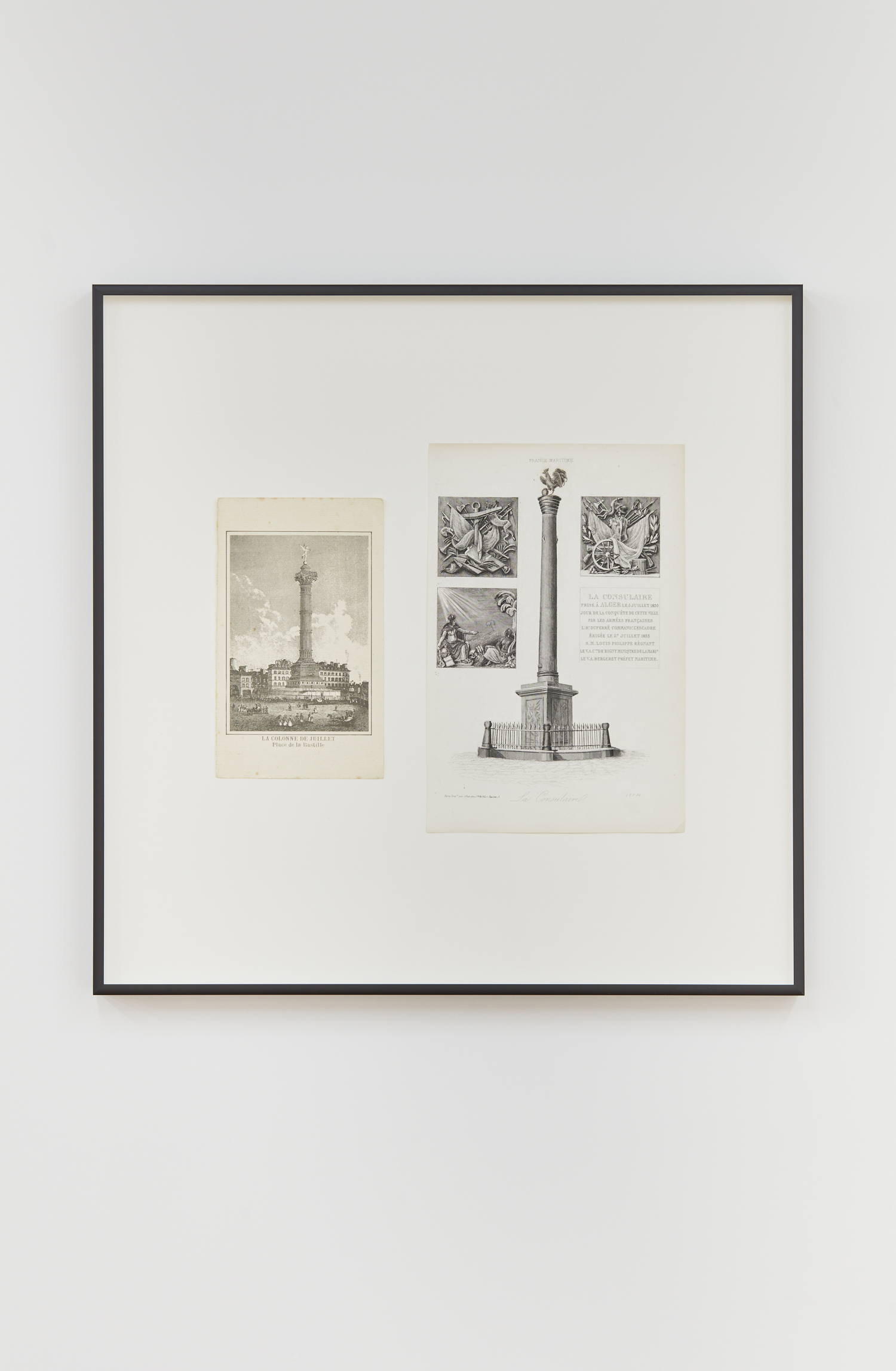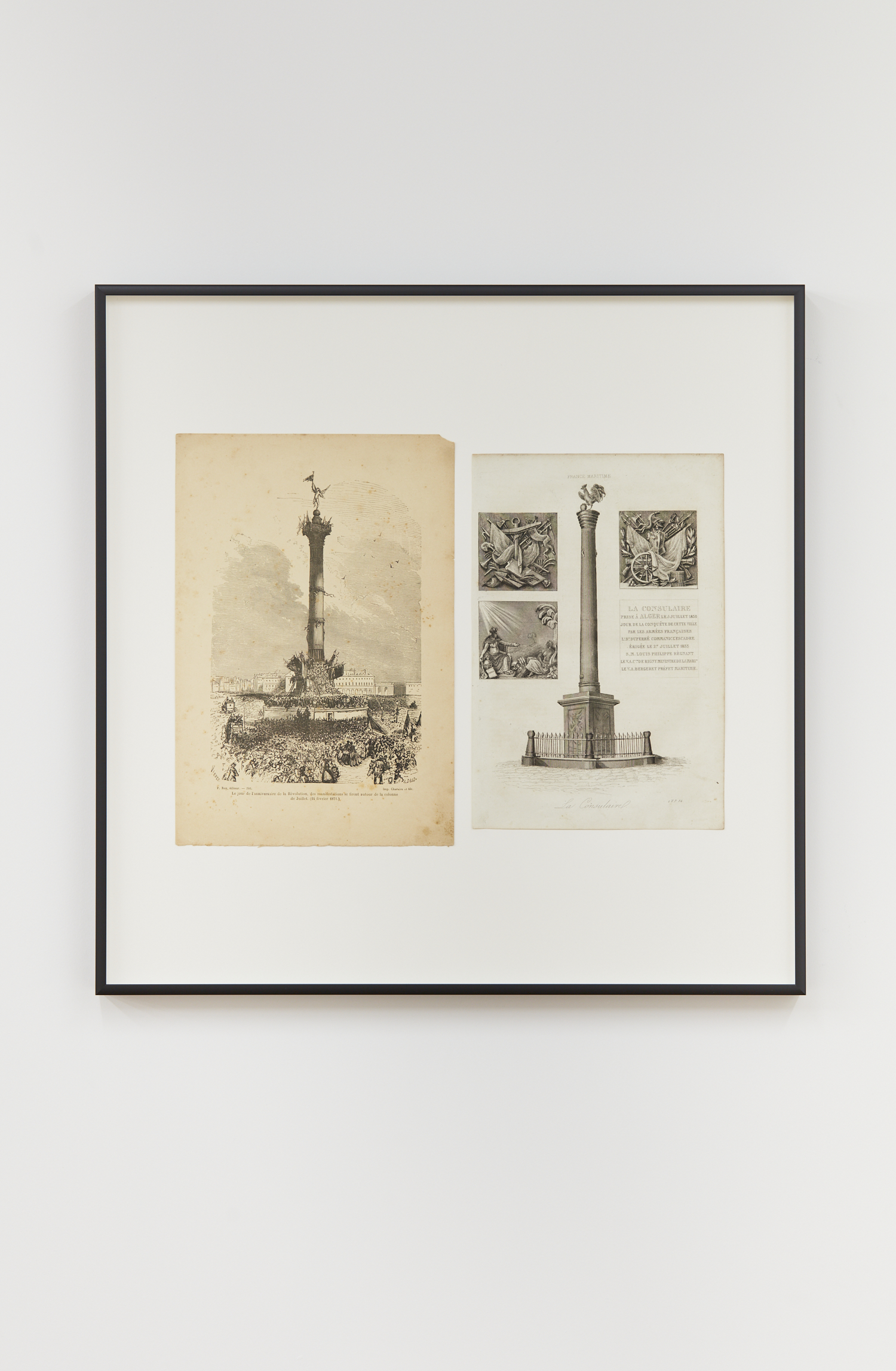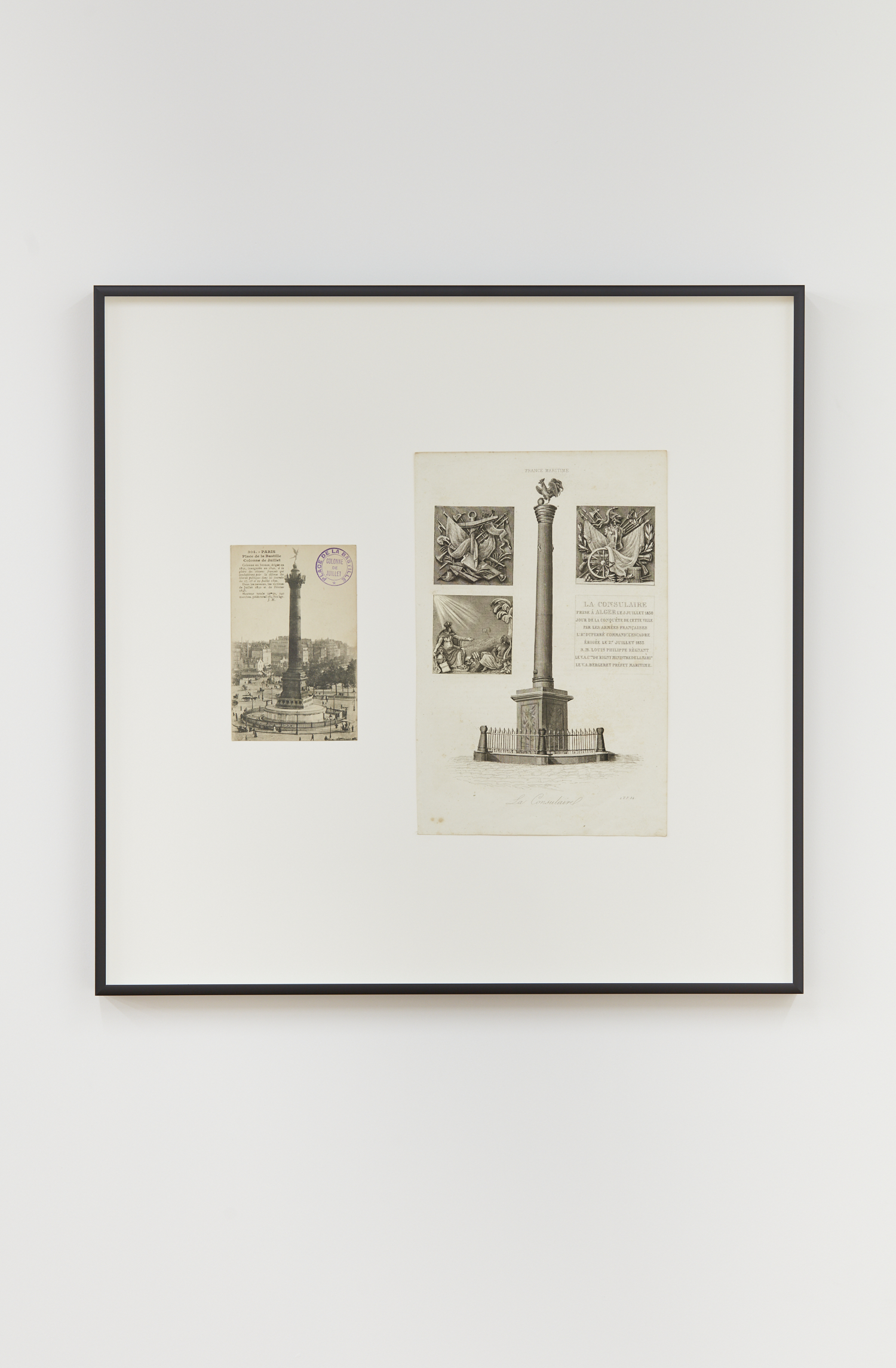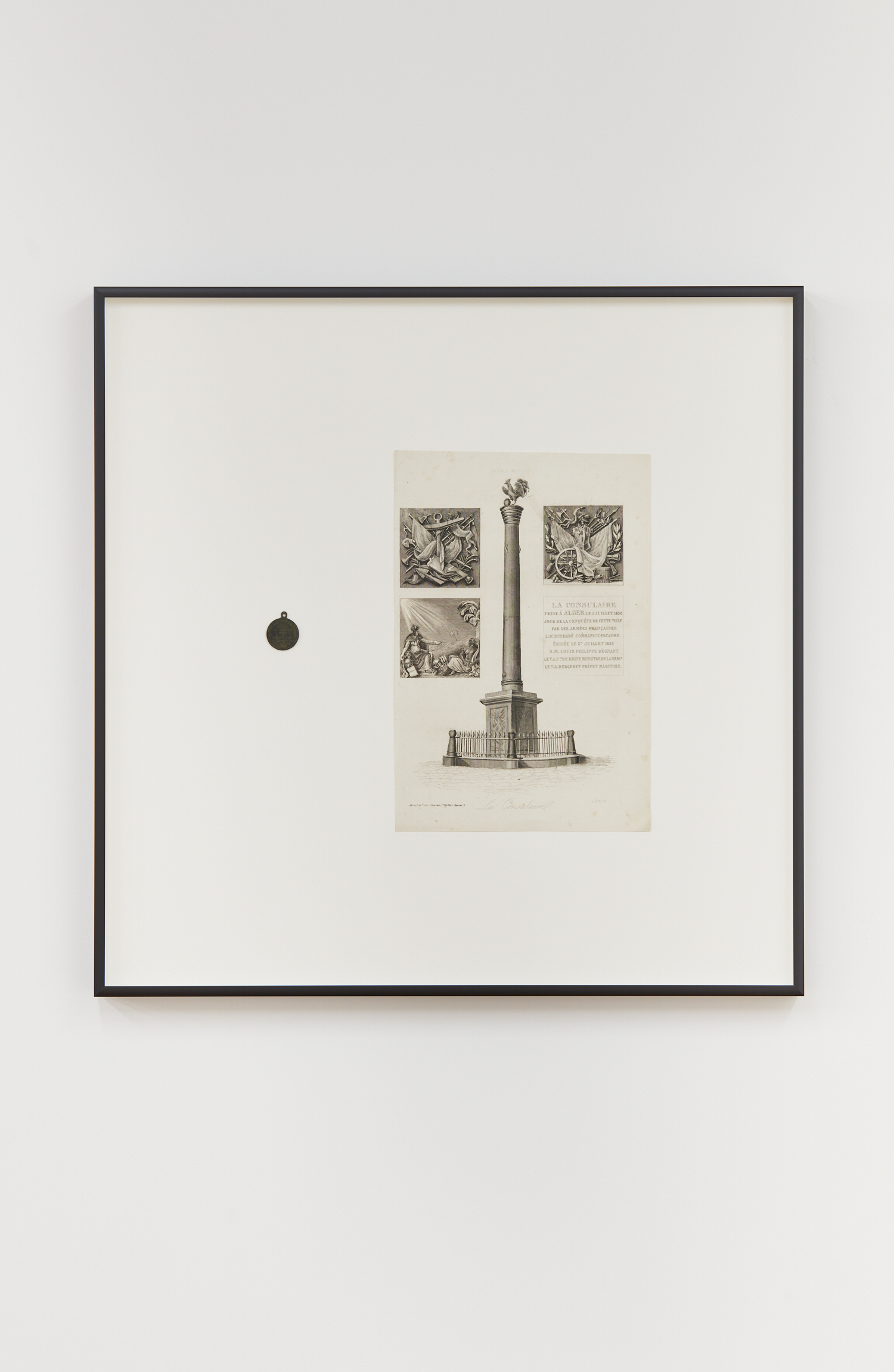


Lieu de mémoire (À utiliser dans service intérieur), 2017–present
67 French colonial postcards (circa 1904–10); hung at the height of the surrounding fence at La Consulaire, Brest. 14 x 9 cm.
Postcards documenting Versailles, bourgeois leisure, cathedrals, chateaux, and the gardens of the Barbizon school of landscape painters. Each reads “À utiliser seulement dans le service intérieur,” or “Use for internal service only.” Only to be circulated within France, Algeria, and Tunisia, these are artifacts of an enduring conception of Algeria and Tunisia as interior to France, a result of the French colonial empire and its postcolonial present.
As Kateb Yacine writes, French language remains one of many Algerian “spoils of war.”
Installation view at Petrine, Paris, January 2023.


A Long Duration of Losses (Baba Merzoug) I, 2023
Nineteenth-century engravings of the July Column, Place de la Bastille, 1830, and the Baba Merzoug, looted in 1830 by the French during the Invasion of Algiers. On July 29, 1833, as part of the third anniversary of the July Revolution, the spoliated cannon (Baba Merzoug) was erected as La Consulaire at the naval port, Brest, where it still remains. Algeria officially requested its return in July 2012. 14 x 10 cm and 27.5 x 18.5 cm each. 50 x 50 cm overall.
A Long Duration of Losses (Baba Merzoug) III, 2023
Nineteenth-century engravings of the 1871 protests on the anniversary of the French Revolution; and the Baba Merzoug, spoliated and erected as La Consulaire, Brest. In the months that followed during the Paris Commune, the Place de la Bastille became the symbol of left and republican resistance, and was closely linked with 1870–71 revolutionary events in Algeria, and the formation of the Algerian Commune. Nevertheless, France continued its violent occupation and annexation of Algeria. 28.5 x 20 cm and 27.5 x 18.5 cm each. 50 x 50 cm overall.


A Long Duration of Losses (Baba Merzoug) II, 2023
Nineteenth-century postcard of the July Column, Place de la Bastille and engraving of the Baba Merzoug, looted in 1830 by the French during the Invasion of Algiers and erected as La Consulaire to commemorate the French war dead, Brest. 14 x 9 cm and 27.5 x 18.5 cm each. 50 x 50 cm overall.
A Long Duration of Losses (Baba Merzoug) IV, 2023
Medal commemorating the 1880 Distribution of Flags at the Place de Bastille and nineteenthcentury engraving of the Baba Merzoug. The same year, France seized the skulls of twenty-four Algerian resistance fighters as “war trophies,” decapitated during resistance to French occupation, and kept them in the Musée de l’Homme, including those of resistance leaders Chérif Boubaghla, Cheikh Bouzian, Si-Moussa Al-Derqawi, and Mokhtar Al Titraoui. In July 2020, 171 years after the Battle of Zaatcha, the remains were repatriated to Algeria. 2 x 2 cm and 27.5 x 18.5 cm each. 50 x 50 cm overall.
 A Long Duration of Losses (Le Magasin Pittoresque), 2023
A Long Duration of Losses (Le Magasin Pittoresque), 2023
Verso of nineteenth-century engraving of the July Column, Place de la Bastille, erected in 1830, the same year as the French Invasion of Algiers. The French encyclopedic journal, Le Magasin Pittoresque, was founded the year the Baba Merzoug was erected as La Consulaire in 1833. The description of the July Column notes four Gallic cockerels (coqs gallois) on the monument; the Baba Merzoug was also outfitted with a coq gallois, at the cannon’s mouth, when designated as La Consulaire. 27.5 x 18.5. 45 x 50 cm overall.
 Lieu de mémoire (Coq en bronze), 2022
Lieu de mémoire (Coq en bronze), 2022Replica of the Gallic cockerel finial on the Baba Merzoug, spoliated and erected as La Consulaire, Brest. Requests to exhibit the museum copy from the Musée de la Marine were denied comment; polystone, patinated copper. 38.1 x 25.4 cm.